The past year will surely be remembered for many events, but a sharp and irreversible change in consumer behaviour has become especially remarkable in the world of marketing. Positive user experience has come to the fore, and personalisation has become the primary tool for shaping it. Why do all the experts call personalisation a trend that is here to stay, what are its benefits for consumers and brands, and how to use it properly? Let’s figure it all out.
Why does personalisation matter?
According to Forrester, brands are planning to increase their loyalty and retention marketing spendings by 30% this year since the only way to weather the economic storm of 2021 is by relying on loyal customers and brand advocates. Even those who had never used online shopping before were forced to change their habits. In 2021, 2.14 billion people — more than a third of the world’s population — are expected to shop online! And most of these people want personal contact with the brand, even though they are much less likely to visit a physical store. In this case, personalised marketing comes to the rescue with individual strategies that return the human element to the digital lifestyle.
According to Kahuna, 86% of consumers say personalisation influences their purchasing decisions, while a VentureBeat survey found that 70-94% of marketers achieved a key metrics increase through personalisation.
How does personalisation work?
Personalisation isn’t just about addressing the customer by name. It is about addressing them by their name within the right context, at the right time, in the right place. And to achieve this, you need to be in touch with them at all times, which is doable if you turn to mobile messaging. According to Statista, people began to spend 70% more time on mobile during the pandemic. We take our mobile phones everywhere, which means we always expect individual attention from brands and are ready to accept it more willingly than ever before. A recent survey found that 91% of consumers don’t mind subscribing to text messages from brands. More than two-thirds of consumers in 2020 signed up for newsletters from more brands than in previous years!
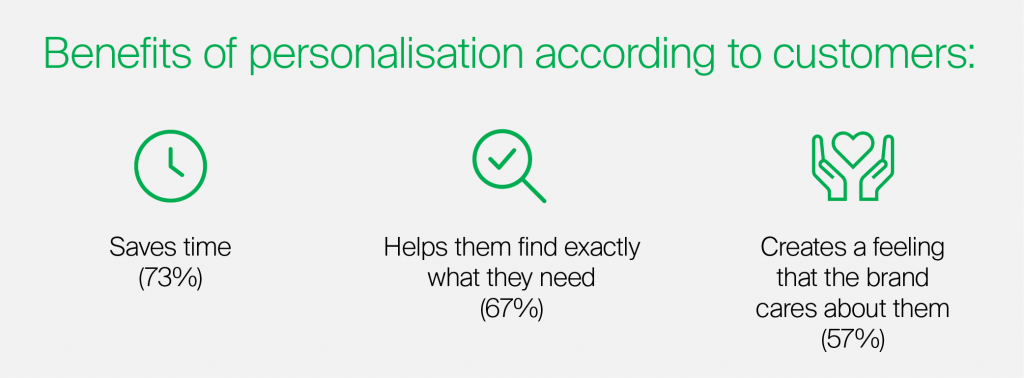
The good news is that customers have become more outgoing and are actively looking for contact with the brand; the bad news is that they have become very picky about the messages they receive. Therefore, providing customers with a personalised experience is becoming a major challenge for businesses. And there is nothing left but to accept it with dignity.
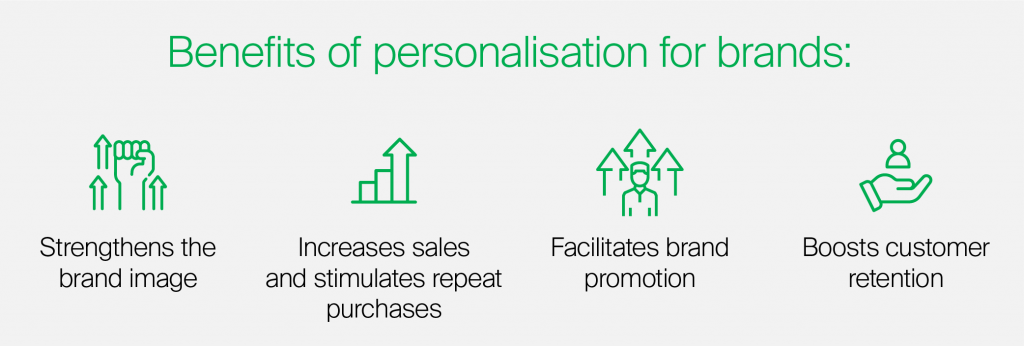
- Strengthens the brand image. 64% of customers believe personalisation increases brand loyalty.
- Increases sales and stimulates repeat purchases. Personalisation motivates 3 out of 4 shoppers to spend more when purchasing from the retailer.
- Facilitates brand promotion. Customers are 20% more likely to recommend brands with a high level of personalisation to their friends.
- Boosts customer retention. 37% of shoppers who click on a personalised offer in an online store will come back again.
The rules for good personalisation
Be attentive when working with the data
Personalisation begins with a deep understanding of your customers gained by collecting consumer data (demographics, location, in-app behaviour, preferences, etc.). Analyse your data carefully because when it comes to personalisation, there is nothing worse than misinterpretation. According to Gartner, 48% of respondents are ready to unsubscribe from a brand’s mailing list after receiving a personalised message they deemed inappropriate; 14% said they are prepared to cut off the contact altogether. Segment and narrow your target audience to make the information you share as relevant as possible, and most importantly, don’t stop analysing. Customer behaviour is constantly changing, and you must check existing data against reality from time to time. And remember that personalised content should accompany the customer on every step of their journey — this approach increases engagement and forms a holistic picture of brand values.
Address people by their name
By memorising a person’s name in real life, we demonstrate our respect and interest in communicating with them, which is why using a person’s name in messaging seems like a no-brainer (but is vital nonetheless). Another key point is that you should also call your name first. That is why it is essential to use an alphanumeric ID when sending SMS and set up the Viber business account to send bulk messages. The client reads messages more readily and trusts them more if he immediately understands who the sender is.
Take full advantage of geotargeting
Geotargeting appeared at the dawn of the Internet. Today, it provides tremendous opportunities for personalisation, from basic campaign scheduling (we already discussed this in detail) to targeting consumers based on what is happening in their specific area (local holidays, weather conditions, etc.). For example, when the hydrometeorological centre predicts a week of rain in the city, advertising for boots, jackets, shoe wax and other relevant goods can be safely launched.
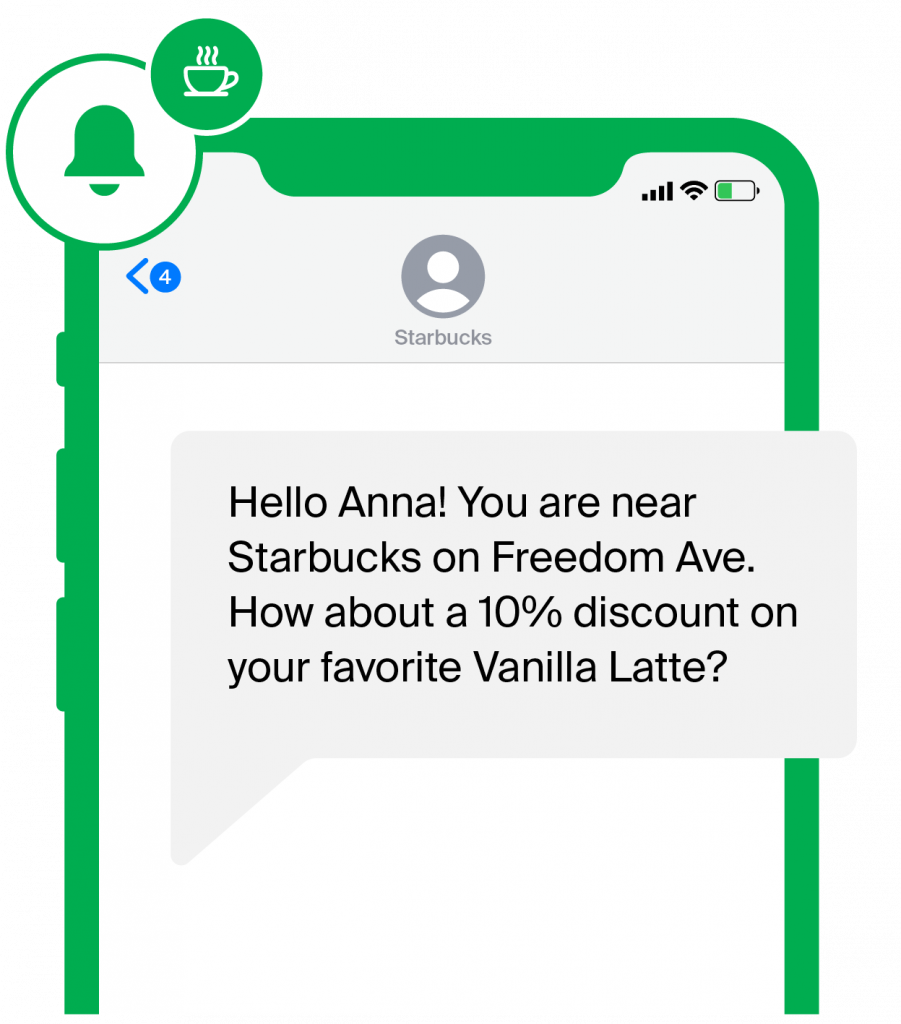
In addition, mobile geotargeting helps you instantly reach out to a person in the right place with the right information. For example, send them a tempting personalised offer when they are next to your physical store.
Be helpful
According to Accenture, 63% of consumers want brands to give them personalised recommendations. Information about goods, receipts, reminders about the promotions and bonuses expiration dates, appointments, smart suggestions based on purchase history, information about your store for newbies or even helpful tips and updates — sent at the right time, in the right amount and based on in-depth analysis of your clients, can help both retain new customers and increase the loyalty of mature customers.
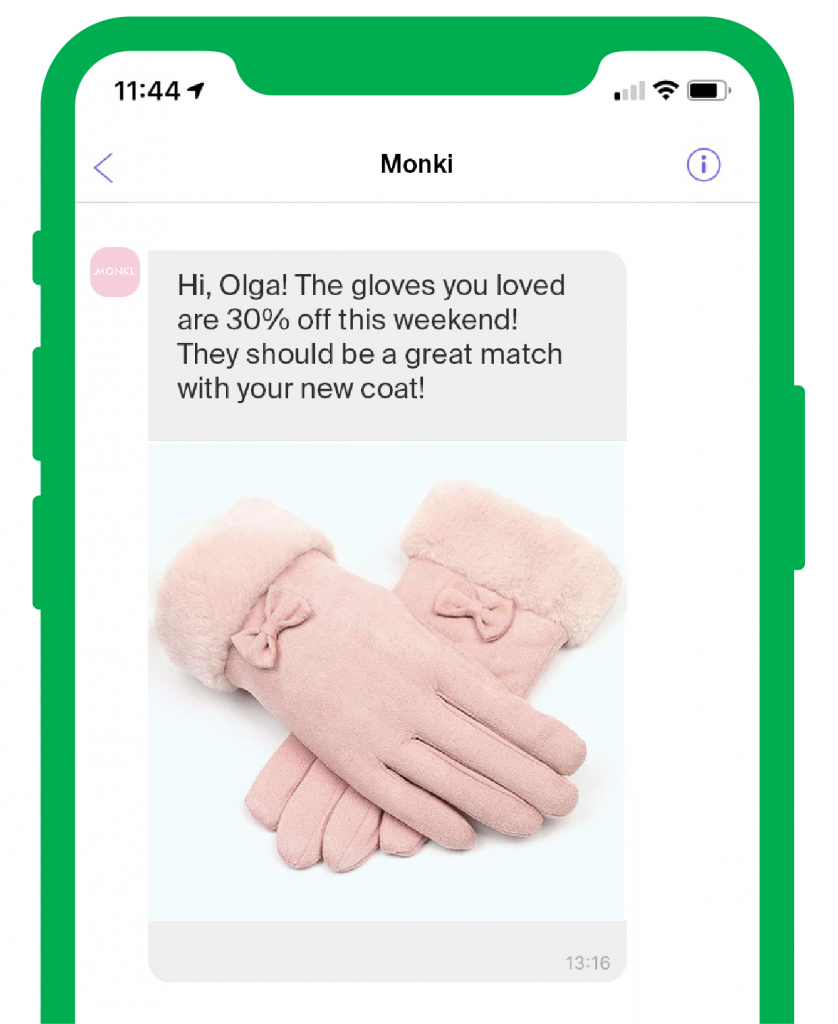
Offer discounts
89% of buyers will willingly exchange their data for the opportunity to receive discounts. Mass sales are becoming a thing of the past and are giving way to customised offers that allow your customers to feel that personal touch: special offers to celebrate birthdays or special holidays, discounts for the first purchase or large orders, loyalty bonuses, secret sales, available only via the link in messages, subscriber raffles, or in-app mini-games to win a discount are all valid mass sales alternatives that work for small businesses and huge corporations alike.
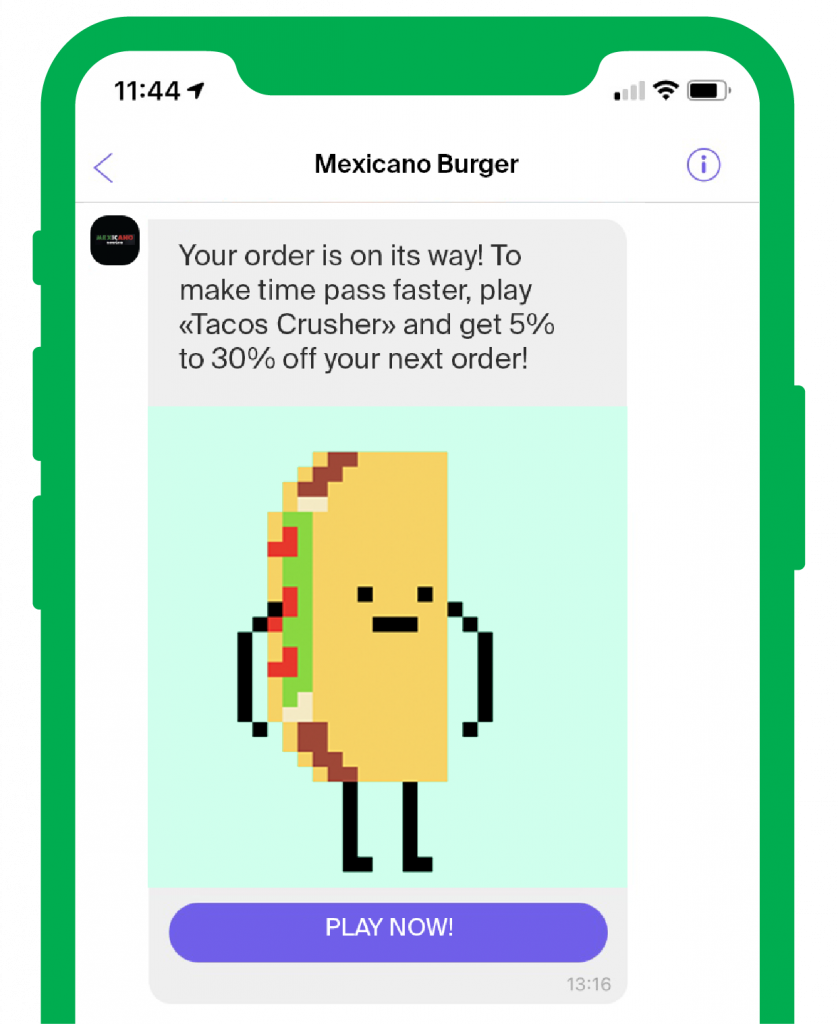
Do not overdo it
Now is the time to find a compromise between privacy and personalisation. An irrelevant banner will not bring clicks, but seeing an ad popping up after mentioning a brand in a conversation with a friend is unsettling. Firefox and Safari have already banned third-party services from using cookies to track users, and Google Chrome will do so soon. Smartphones hide MAC addresses and alert you about unwanted application activity, such as using a microphone.
Therefore:
- Give preference to first-party data shared by the consumers.
- Use the analytics data, not tracking.
- Avoid sensitive targeting criteria: health, wealth, religion and politics.
Keep your data safe
Every year, data security issues are becoming more and more relevant, and customers grow increasingly concerned. Just remember how many high-profile data breaches happened in the past year. That is why in return for their data, customers want to receive high-quality and actionable communication. The challenge for businesses is to deliver on this promise and ensure the confidentiality of user data (and preferably inform the users about the actions taken).
Focus on the new technologies
This year 5G is finally becoming a reality, as more and more smartphone manufacturers are offering models that support it. Research by Strategy Analytics suggests that half of all mobile purchases will be made with 5G smartphones over the next five years, so brands should consider providing personalised 5G experiences now. It is also worth considering personalised virtual reality since VR technology opens up new avenues for advertising, and Facebook Horizon is proof of this.
More creativity!
Any communication stops if it becomes boring. Communicate with clients in their language and bring up topics of interest to them. In addition to being useful and relevant, your personalised messages should evoke positive emotions.
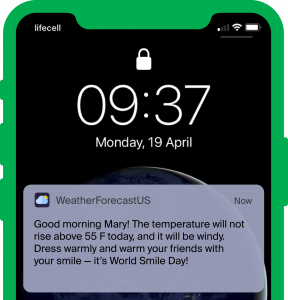
Personalisation is what helps turn ordinary mobile users into active and engaged ones. It is also a huge space for creativity and experimentation, where it is crucial to choose an effective strategy and the right communication tools. Get in touch with our experts and find out what opportunities GMS provides to successfully launch personalised campaigns.

